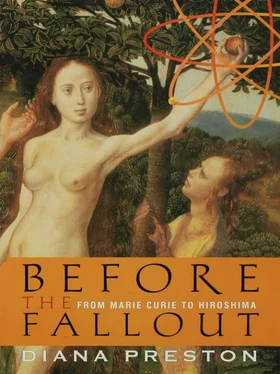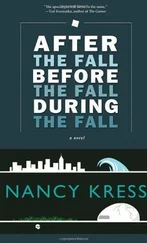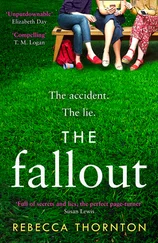Marie was left a widow at thirty-eight, with Irene as well as her second daughter, Eve, born in 1904, to care for. The University of Paris decided to maintain its chair of physics, created for Pierre two years earlier, and invited Marie to assume his duties but did not award her the professorship. It was, nevertheless, the first time in France that such an appointment had been given to a woman, and she accepted. Her first lecture, delivered fifteen years to the day since she had first entered the Sorbonne to register as a student, was a highlight of the social calendar. The fashionable and curious craned their necks for a good look at the first woman to lecture at the Sorbonne. She walked into the lecture room quietly with downcast eyes and commenced her course at the exact point at which death had halted Pierre’s. Newspapers hailed her performance as “a victory for feminism.”
Marie rejected a government proposal to build her a laboratory. Pierre had been haunted by the lack of proper facilities, and she was bitter that it had taken his death to induce the authorities to provide them. Single-mindedly, at times obsessively, she immersed herself in her work, shunning celebrity. Her greatest dread, as Eve Curie later recalled, remained the “crushing, mortal boredom which dragged her down when people rambled on about her discovery and her genius.” Her response, repeated like a mantra over the years to come, was “In science we must be interested in things, not in persons.” Rutherford would prove one of her greatest allies in some difficult personal times ahead.
Rutherford’s findings on radioactivity had established his international reputation as one of the leading experimental physicists of the day. Universities courted him eagerly, and in May 1907 he returned to England as professor of physics and director of the Manchester University Laboratory. The laboratory was only seven years old and, unlike the Cavendish with its “sealing wax and string,” was magnificently equipped. The only drawback was that it possessed almost no radioactive materials. Since Rutherford’s primary interest was to follow up his work with Soddy and unravel the sequence of elements generated through radioactive decay, this deficiency had to be remedied. A generous loan of some five hundred milligrams of radium bromide from Professor Stefan Meyer of the Radium Institute in Vienna, who had access to the same Bohemian mines that had furnished Marie Curie’s pitchblende, solved the problem.
In 1908—the same year that Kenneth Grahame wrote Wind in the Willows and Jack Johnson became the first black man to win the world heavyweight boxing championship—Rutherford received the Nobel Prize for Chemistry for his investigations into the disintegration of the elements, and the chemistry of radioactive substances. He was amused that the prize was for chemistry, not physics, joking about his instantaneous transmutation from physicist to chemist. Students from around the world flocked to Manchester to study under the Nobel laureate. They found Rutherford an inspirational but taxing taskmaster with a facility to concentrate on a problem for long periods at a stretch without getting tired or bored. A young Japanese scientist named Kinoshita from Tokyo Imperial University, who studied briefly under Rutherford in 1909, wrote wistfully from Japan, “I wish I could go back again to your lab so that I shall be able to do some decent work.” The visiting Japanese minister of education, Baron Kikuchi, was so impressed by Rutherford’s vitality as well as his intellect that he remarked—no doubt tongue in cheek—that he must be the son of the famous Professor Rutherford.
The matter now absorbing Rutherford, and which would lead to the dissection of the atom, was the nature and behavior of alpha rays—the least penetrating form of radiation. While still at Montreal he had begun to think that helium found in the atmosphere was probably the product of radioactive decay. Studies by Soddy, by then in London and working with the chemist Sir William Ramsay, the discoverer of the inert gases, suggested he was right. Soddy demonstrated that, as it disintegrated, radium emitted streams of helium atoms, traveling at tremendous velocity. Rutherford suspected that these were the same as the alpha rays or particles emitted by radioactive materials and began investigating them.
Together with one of his research students, the German Hans Geiger, Rutherford invented an electrical instrument capable of counting individual alpha particles. [7] Hans Geiger would later develop this device into the Geiger counter, still used in radiation laboratories.
However, Rutherford abandoned this method in favor of one capable of actually making alpha particles visible using a plate coated with zinc sulphide. When the plate was hit, or “bombarded,” with alpha particles, tiny flashes of light occurred at each impact. [8] The scientists used the military term bombard to describe how they placed a source of radioactivity near an experimental subject—for which they again used a military term, the target —to determine the effect of the radioactivity released upon the target.
The method—called “scintillation” from the Greek word for spark—was time-consuming and hard on eyes straining to count every flash, but reliable. Hans Geiger recalled the atmosphere: “I see the gloomy cellar in which he had fitted up his delicate apparatus for the study of the alpha rays. Rutherford loved this room. One went down two steps and then heard from the darkness Rutherford’s voice…. Then finally in the feeble light one saw the great man himself seated at his apparatus.”
Rutherford’s next eureka moment resulted from a routine experiment which he had instructed Geiger and another researcher, Ernest Marsden—by his own account a callow youth from Blackburn—to conduct using the scintillation method. Their task was to see what happened when alpha particles were fired at metal foils, so they positioned a source of alpha particles near a thin gold foil. Most of the particles passed through with little deflection as they expected, given the particles’ weight and velocity. However, a few—one in eight thousand—came bouncing straight back. To Rutherford this was “almost as incredible as if you had fired a 15 inch shell at a piece of tissue paper and it came back and hit you.” It suggested the presence of incredibly strong forces in the atoms of gold.
Rutherford meditated over these results, which he simply could not understand. He followed his own advice to his students, “Go home and think, my boy,” and over a period of eighteen months by logic and intuition found an explanation for his experimental findings and so solved the puzzle. In December 191 o Rutherford, “obviously in the best of spirits,” burst into Geiger’s room and, as Geiger recalled, excitedly announced that “he now knew what the atom looked like.” He had worked out that it was not the solid structure studded with electrons like plums in a pudding as suggested by J. J. Thomson and others. The atom Rutherford visualized was almost empty. Nearly all its mass was concentrated in a powerfully charged but tiny nucleus, the size, comparatively, of a pin’s head in St. Paul’s Cathedral. The reason why most of Geiger’s and Marsden’s alpha particles had barely been knocked off their trajectory as they passed through the gold atoms was that, like ships skimming a great, empty ocean with no other vessels for thousands of miles, they had passed too far from the tiny nucleus to be affected. However, occasionally and randomly, a particle had skimmed close enough to the nucleus to be violently repulsed by an electrical force so enormous that it had virtually been flung back on itself.
Rutherford’s interpretation of what had happened was revolutionary. Not only had he established the planetary model of the atom, whereby electrons orbit a tiny nucleus, but he had changed forever the way in which people would think of the world around them. He had revealed that the stability and solidity of everyday objects—tables, cups, spoons—are an illusion. At the most minute level human beings and everything around them consist almost entirely of voids with insubstantial boundaries defined by whirling particles.
Читать дальше












